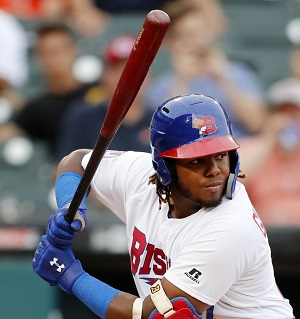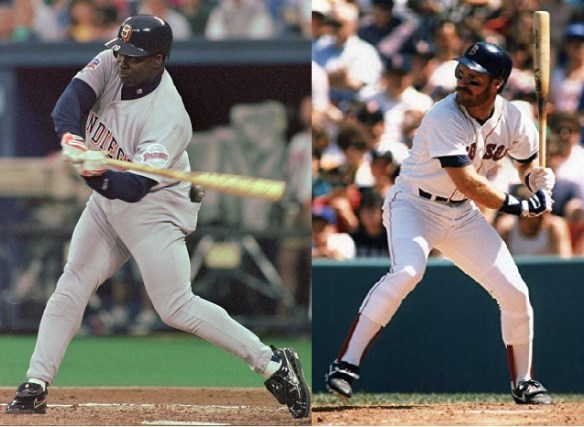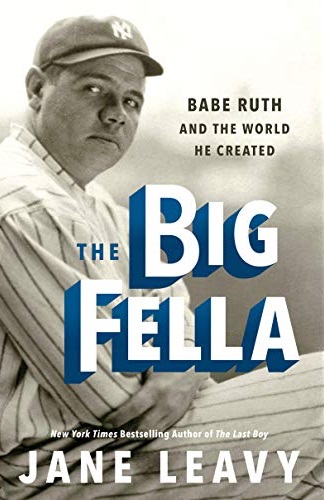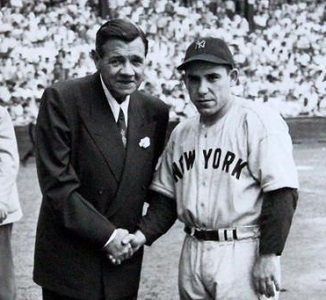
HI, NEIGHBOUR!—Bryce Harper, now about to play in Mike Trout’s native neighbourhood, ends his sweepstakes with a deal from the Phillies. It may yet do Trout a bigger favour than it does the Phillies, depending on what the Angels do or don’t do with baseball’s best before he hits the open market after the 2020 season.
If nothing else, Washington’s long Nationals nightmare begins, now that their longtime mainstay Bryce Harper has signed on with the Phillies for 13 years and $330 million. It’s one thing for the Nationals having prepared for a future without him; it’s something else again that that future is here.
The Nats spent the winter preparing by upgrading their bullpen, fortifying their catching corps, outbidding everyone else for starting pitcher Patrick Corbin, and plugging a second base crack with veteran Brian Dozier. Only half hoping that Harper might play the market, find it wanting in one way or another, and come back to take the Nats’ original ten year/$300 million offer.
It turned out that Harper wanted longer term stability than that and that the Phillies were willing to give it to him, including an absence of opt-out clauses. Assuming Harper plays out the full term of the deal, guess how many games the Nats get to play against the Phillies with or without the National League East title at stake. How does 247 games strike you?
The Nats are still a terrific team. They’ll still give the Phillies (and anyone else in the NL East) a run for their money. But they might be just a little less fun without Harper. Unless they have some aces (on and off the mound) up their similarly red sleeves.
When Manny Machado signed with the Padres last week (ten/$300 million) it kicked the rebuilding Padres far closer to returning to real competitiveness, particularly with their well-regarded farm system on the threshold of a harvest. Harper sees and raises.
He kicks the Phillies—whose fortifications to their solid and still ascendant youthful core this winter include J.T. Realmuto, Jean Segura, Andrew McCutchen, and David Robertson—right into being the NL East favourites. The Phillies are already imagining their Opening Day lineup with Aaron Nola on the mound and Harper patrolling right field. Phillies fans may not be muttering “Wait ’till next year” this time around.
It’s not that Harper himself didn’t gamble. The market proved a lot less flexible than he and Machado believed going in. He thought about life as a Yankee, the team his father rooted for, and either he or the Yankees or both thought, “Can’t be done.” He pondered life as a Dodger, closer to his Las Vegas home, until they “apparently offered Harper less than half the guaranteed money he’d already turned down in D.C.,” as Thomas Boswell puts it. He even pondered life as a Giant, who lost 89 in 2018 but still have the weight of several bad contracts and quickly-aging anchor players.
The Phillies showed him two more things. They showed him the guaranteed money (and a far less oppressive tax state than California), but they also showed him a team built to win now and for the next several years. A team young enough despite the veteran additions to stay winners for the next several years. A team that likes the kind of player he is at core, what Boswell called “hard hat with, sometimes, a hard head.”
The hard head cause a few clumps of Nats hair to be torn out while the team’s brain trust struggled to convince him outfield walls are still the least forgiving walls on the planet. Harper’s hustled himself into hardware-costing injuries in the past; he struggled in 2016 because of a shoulder injury and, later, a stiff neck.
Last year, after blasting out of the starting chocks in his first seventeen games, Harper nose-dove until just before the All-Star break. He’d come out of spring training seemingly obsessed with his launch angles and his pull hitting, not to mention defensive overshifts. After making a pre-break correction to that thinking, he hit .300 the entire second half, with a .305/.442/.538 slash line the final two months.
Harper will have his moments of transcendence and his moments of failure, and the notorious Philadelphia boo birds will let him know the difference as they usually do. (“Those people,” legendary pitcher/playboy Bo Belinsky once observed, “would boo at a funeral.”) He’s strong enough to know the difference and experienced enough not to let the worst of the latter stain the shinings of the former.
His critics, pardon the expression, harp on his full-season .247 batting average as evidence he had no business playing this winter’s market for the stakes he wanted. But last year’s NL Most Valuable Player, Christian Yelich, had 41 percent of his hits go for extra bases. Harper had 49 percent go for extra bases. Nolan Arenado, who just signed a delicious extension aimed at making him rich and a Rockie for life, and led the National League with 38 home runs last year, had 45 percent extra-base hits.
Let’s look at the extra-base hit averages among the other top ten position players in last year’s MVP voting (Cy Young Award winner Jacob deGrom and Max Scherzer also finished in the top ten), in descending percentage order:
Matt Carpenter—53%
Trevor Story—49%
Javier Baez (RBI leader)—47%
Ronald Acuna, Jr.—44%
Paul Goldschmidt—42%
Anthony Rendon—42%
Freddie Freeman (hits and doubles leader)—37%
Lorenzo Cain—22%
Harper wasn’t even close to getting a single MVP vote last year but only two MVP candidates had the same or a higher percentage of extra-base hits. And if you’re still harping on his full-season batting average, feel free to remind yourself about the two wounding flaws in batting average:
1) It treats all hits equally, and all hits are not equal. Come to think of it, all .300 hitters aren’t equal, either. If Tony Gwynn was a more valuable or more complete hitter hitting a lifetime .338 than Willie Mays hitting a lifetime .302, the one who says so a) didn’t see either one play all that often; and/or, b) doesn’t read the whole record as it was above, beyond, and deeper than those averages.
2) A batting average accounts only for your hits divided by your credited at-bats. It doesn’t account for everything you do at the plate divided by all your plate appearances, and thus gives an incomplete picture of what you do at the plate to help your team win.
Maybe batting average ought to be called hitting average instead. Or maybe the term for a complete offensive percentage—including hits, walks, intentional walks (yes, count them separately), sacrifices, and the times a batter got hit by a pitch, divided by his total plate appearances—should be called Real Batting Average. (No, it’s not the same as on-base percentage, which factors official at-bats but not total plate appearances.) Here are the RBAs for the aforementioned top ten MVP candidates, including the winner, plus that other guy who just signed with the Padres for ten years and $300 million:
| Player | PA | Hits | Walks | IBB | Sacs | HBP | RBA |
| Javier Baez | 645 | 176 | 29 | 8 | 5 | 5 | .346 |
| Trevor Story | 656 | 174 | 47 | 3 | 4 | 7 | .358 |
| Ronald Acuna, Jr. | 444 | 127 | 45 | 2 | 3 | 6 | .376 |
| Nolan Arenado | 673 | 175 | 73 | 10 | 7 | 3 | .398 |
| Manny Machado | 709 | 188 | 70 | 18 | 5 | 2 | .399 |
| Lorenzo Cain | 620 | 166 | 71 | 1 | 2 | 8 | .400 |
| Paul Goldschmidt | 690 | 172 | 90 | 11 | 0 | 6 | .404 |
| Matt Carpenter | 677 | 145 | 102 | 17 | 4 | 6 | .405 |
| Christian Yelich | 651 | 187 | 68 | 2 | 2 | 7 | .409 |
| Freddie Freeman | 707 | 191 | 76 | 12 | 6 | 7 | .413 |
| Anthony Rendon | 597 | 163 | 55 | 5 | 8 | 5 | .417 |
| Bryce Harper | 695 | 137 | 130 | 16 | 9 | 6 | .429 |
Harper’s 2018 RBA was .429. In other words, even in what was considered a bad full season because of his .247 batting average, Harper was a more complete batter whose real batting average was better than both than the top ten National League position players and his fellow new three hundred times over millionaire Manny Machado. (Last year’s American League MVP, Mookie Betts, shows a .459 RBA.)
And that’s without talking about something else that helps your team put runs on the board: the extra bases you take on followup knocks. Harper wasn’t as good at that last year as in seasons past, but lifetime he’s taken the extra base(s) on the followup knocks exactly half the time he’s reached base in the first place. (For a little perspective, Hall of Famer Rickey Henderson—the Man of Steal himself—did it 55 percent of the time he was on base . . . and Mike Trout does it 57 percent of the time.) He’s not waiting for you to hit one out of the yard to kick on the jets and fly.
(So why did Harper crater to a 1.3 wins above a replacement-level player last year? Easy: bad outfield defense. Even in a down season Harper was still worth 4.2 WAR as an offensive player, just below an All-Star’s level. But his defensive WAR was -3.2. Maybe the weight of the free agency season he’s just finished will be removed enough to clear his head in right field as well as all the way at the plate.*)
Now, who beside their new teams have been done the biggest favours by the Harper and Machado deals? One name seemed to spring to mind at once after Harper signed, and he’s due to hit free agency after the 2020 season.
He’s been the best all-around player in baseball since his first full season. The question is long established that it’s just a question of when, not if he’s inducted into the Hall of Fame, assuming nothing drastic or tragic happens to him before he finishes his tenth major league season. And his 2018 was better than all the above in several ways last year even with missing time due to a thumb injury.
OK, you asked for it. Forty-five percent of Mike Trout’s 2018 hits went for extra bases, but his real batting average, according to the foregoing criteria, was . . . .507.
Mike Trout in 2018 was a more complete hitter doing that much more to help his team win—never mind that Angel fans continue to wish the organisation would build a team its and baseball’s best player can be proud of—than both leagues’ Most Valuable Players and their top-ten MVP finishers among position players.
The Angels had better get to serious work on a) building a team Trout can really be proud of; and, b) making him their Nolan Arenado and not letting him escape without a fight. And there isn’t a fan alive observing the Harper-Machado markets, questioning the sanity of either or both, who’d say Trout doesn’t deserve it even more.
* Postscript—Not long after writing and publishing this essay, I was reminded that Bryce Harper suffered a hyperextended left knee late in the 2017 season, and that the effects may have carried over long enough into the 2018 season to affect both his plate appearances—since the injury occurred, of course, on the leg off which he drives his batting—and his play in right field. Those who feared that he himself feared going for some balls or trying for some plays may well have forgotten that injury, as I did.




 Reading of it in any kind of depth, Babe Ruth’s childhood was six parts David Copperfield, half a dozen parts Dead End Kid, and not entirely of his own making. It turned him both larger than life and not quite as large as his legend, one of the unmistakable faces of the Roaring Twenties and one of the most deceptive American myths.
Reading of it in any kind of depth, Babe Ruth’s childhood was six parts David Copperfield, half a dozen parts Dead End Kid, and not entirely of his own making. It turned him both larger than life and not quite as large as his legend, one of the unmistakable faces of the Roaring Twenties and one of the most deceptive American myths.
